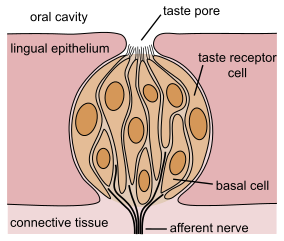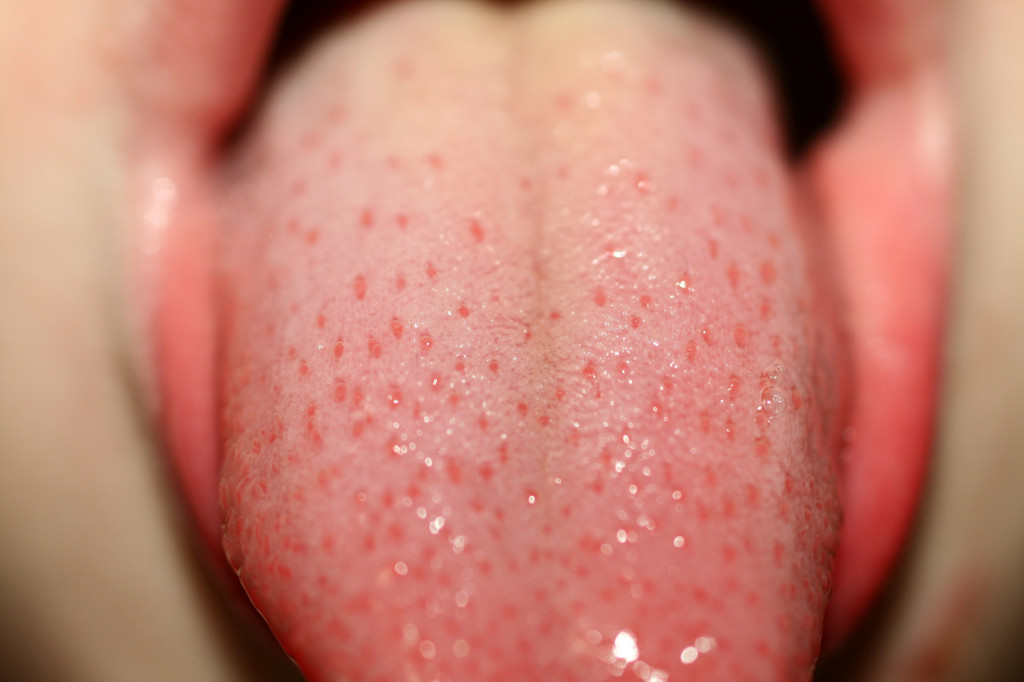Taste plays such a critical part in our life. We eat what “tastes good” and avoid what “tastes bad.”
The first critical role of taste, however, is to prevent us from ingesting poisons that could kill us. It is our second line of defense for poison prevention.
[box type=”tick” size=”large” style=”rounded” border=”full”]This is the second line of defense because the first one is olfaction — our sense of smell. Most of the time, we smell our food before we put it in our mouth, and we wouldn’t even try tasting anything that smells “disgusting.”[/box]
What Can We Taste?

It might surprise you, but we can only taste 5 different types of tastants: Salty, sour, sweet, bitter, and umami. I am not sure why the English language uses a Japanese word to describe one of the 5 tastes… But Umami is translated as “savory” in English.
The sensory cells that do the “tasting” are called gustatory cells. Gustatory cells are chemoreceptors that make up the taste buds that lie on your tongue, soft palate, and at the back of your throat.
How Does It Work?
The gustatory cells have to translate the chemical information of the food into an electrical signal to be sent to the brain. They do this in two ways.
1. Ion-Channels
The gustatory cells for salty and sour use ion-channels to do the transcoding.
Salt is mostly made of sodium ions that are electrically charged. These charges travel into the cell through the ion channels, thus changing the polarity of the cell membrane, and create an electrical signal. This electrical signal then travels to the brain.
The same applies for sour particles. Sourness is our tongue gradient to measure acidity, that is the concentration of H+ ions. These ions have the ability to travel inside the cell and result in the creation of an electrical signal.
2. G-protein coupled receptor
The information for sweet, bitter and umami is translated into an electrical signal through G-protein coupled receptors in the membrane of gustatory cells. This process is a little more complicated than for the ion-channels. They usually require the food to touch at least two receptors. This contact activates a “G-protein,” which acts a middle man, and tells other proteins inside the cell to start a process that results in the production of an electrical signal.
Interesting Facts
[unordered_list style=”bullet”]
- Each person has, on average, about 10,000 taste buds in their mouth. Some people have, however, TWICE that amount!! If you have so many taste buds, then you are called a supertaster – your sense of smell is developed way over the average! (Percentage wise, there are more women super tasters than men).

[unordered_list style=”bullet”]
- Ever wonder why we sometimes give candies to dogs but not to cats? Cats don’t have sweet receptors! They don’t taste the sweetness, and therefore don’t feel rewarded by it.
I just read a funny article about why airplane food taste so bad.
[unordered_list style=”bullet”]
- Besides the fact that air plane food has to be cooked in advanced, and heated up very badly, it’s because being up in the air on an airplane affects our biology. The dry air from the plane’s AC dries up our nose so we can’t smell our food (Smell is one of the major source of taste for the brain, read the article), and the air pressure prevents our taste buds from functioning correctly!
That’s the reason why you will never be able to eat a five star meal in the air… It’s not the chef’s fault!
Minimum To Remember
[unordered_list style=”tick”]
- We are receptive to five basics tastes: salty, sour, bitter, sweet and umami.
- The chemical information in the food has to be translated into an electrical signal by the receptors (either ion-channels or G-protein coupled receptors) of the gustatory cells.
- There is no use trying to train a cat by giving it candies as a reward. It will simply ignore you, as it always does.
If you want more articles and videos about the Nervous System, you can find them here. More resources are available to help make Biology fun. I invite you to absorb all the content you can find here at Interactive-Biology.com.
